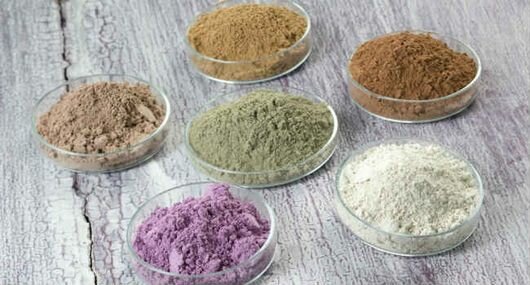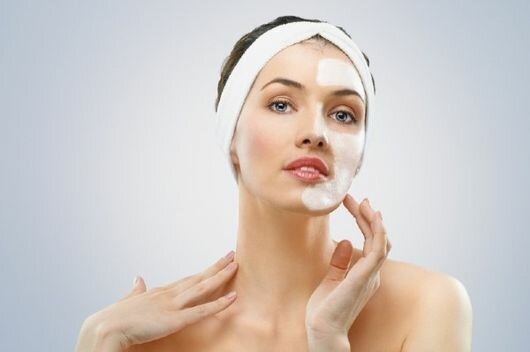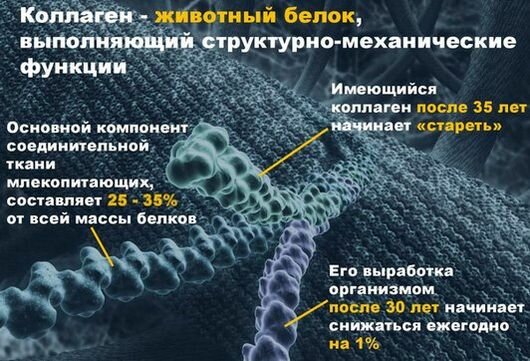Homemade creams and masks are effective only for a while and require constant use. But they are not able to eliminate more serious skin defects. This is especially true for deep wrinkles, the effects of acne or superficial scars. But chemical peeling can easily cope with them.


This procedure is very popular because it is by far the most effective and affordable way to solve many skin problems. How is chemical peeling of a face done, what is it and what are its varieties – all of this can be found in this article.
- Chemical peeling for the face – what is it, the essence
- Indications for the procedure
- Deep chemical peeling
- Mid peeling
- Surface chemical peeling
- Is it possible to do the procedure in the summer
- Chemical peeling in the salon: how the procedure goes
- Types of professional peeling
- Chemical peeling with retinoic acid 5 Ondevie
- Chemical peeling TCA
- Beautymed peeling
- Chemical peeling with glycolic acid
- AHA acid cleaning
- Peeling ABR
- Jessner’s Chemical Peeling
- Chemical peeling for the face
- Chemical peeling Faberlic
- Almond peeling
- Salicylic peeling
- Chemical peeling with lemon
- Fruit peeling
- Peeling recipes for home use
- Recipe number 1
- Recipe number 2
- Recipe number 3
- Acne Chemical Peeling
- Skin Care After Peeling
- Contraindications
- The cost of peeling in a beauty salon
- Useful video materials about chemical peeling of the face: what it is, types, how often it can be done
Chemical peeling for the face – what is it, the essence
Chemical peeling or exfoliation is the removal of the upper layer of the skin with various chemical preparations, which leads to the renewal of the upper cells of the epidermis and the elimination of various kinds of defects on the skin.
In other words, a chemical solution is applied to the skin, which leads to the death of the upper layer of the epidermis (the so-called controlled chemical burn). Then the body starts the process of accelerated regeneration of damaged cells, thereby renewing the skin.
The recovery process is slow and depends on the degree of the procedure. But then the efficiency of eliminating many problems on the skin with this method is quite high.


It is worth noting that chemicals, acting on the skin, thereby increase its protective response. And this happens due to the acceleration of the production of collagen, elastin and hyaluronic acid. These components increase the tone of the skin and form a smooth relief, which reduces the number of wrinkles.
Chemical peeling is used not only to refresh the skin of the face, but also the hands, neck and decollete. There can be many reasons for doing this, from simply rejuvenating the skin to removing unwanted defects.
In addition, this method can be used regardless of age and skin type, which makes the procedure quite common in cosmetology.



 Do not miss the most popular article in the rubric:
Do not miss the most popular article in the rubric: Facial massage according to the Japanese doctor Asahi Zogan.
Indications for the procedure
Frequent patients for a chemical peeling procedure are women over 30 years of age, since it is during this period of time that the skin undergoes intensive changes, and not for the better.
The most common skin defects that chemical peels can easily cope with include:
- skin pigmentation (senile or tanning);
- keratosis (tightening of the skin) is the most common phenomenon in aging skin;
- acne, if it is not caused by viruses or bacteria (demodicosis);
- acne scars and scars;
- deep wrinkles;
- stretch marks.


Exfoliation is also used to increase the tone of the skin of the face – its softening and moisturizing, easy lifting effect due to improved synthesis of elastin, and rejuvenation (which is enhanced by increased collagen synthesis).
Chemical peeling is not able to eliminate sagging skin or spider veins on the face, and also can not narrow the enlarged pores.
To solve these problems, it is worth looking for other methods, for example, surgical skin tightening or other cosmetic procedures.
Most women, having learned about chemical peeling of the face, what it is and how it is able to renew the skin, they immediately want to use this technology for rejuvenation.
It is worth noting that this procedure has no age restrictions, but for each a certain concentration and type of chemicals is selected, depending on the indication and skin type. Therefore, it will not be out of place to find out what types of chemical peeling are and what is the difference between them.
Deep chemical peeling
The most painful, because it penetrates into all layers of the skin. With such exfoliation, a complete burning of the skin surface occurs, which even leads to the appearance of “blood dew”. Therefore, it is used locally, and only to eliminate pronounced skin defects:
- large scars;
- deep wrinkles;
- strong sagging skin.
Due to its aggressiveness, deep peeling is used more often for people over 60 years old. The procedure is carried out only in a specially equipped room (operating room) and is equivalent to microoperation, therefore anesthesia is used.


After the procedure, bed rest is necessary, because the lesion area is extensive, and infection can occur. The recovery process includes the formation of a dense crust that cannot be removed – it must peel off itself within 10 days. Otherwise, scars will remain.
Redness lasts up to about 2 months. During this period, it is necessary to carefully monitor the condition of the skin, applying anti-inflammatory drugs and avoiding direct sunlight.
Such peeling is contraindicated for people with impaired heart and kidney function, since it is carried out by phenol derivatives that can penetrate the blood
And this can contribute to the exacerbation of the disease.
Mid peeling
Chemicals affect not only the epidermis, but also the upper layer of the dermis. Therefore, this peeling is effective for smoothing the skin with:
- the appearance of sunspots on the face;
- skin tightening, which is characteristic of senile keratosis;
- the formation of shallow scars – this happens after acne and acne;
- the appearance of small facial wrinkles;
- acne treatment.
Complete epithelization takes a little more than 1 week. The course is designed for 4-6 sessions. After the procedure, crusts appear that disappear within a week, redness lasts about 2 weeks.
This type of peeling should be done with extreme caution to people who have dark skin, since they have a greater predisposition to pigmentation disorders
The main chemicals for this procedure:
- Jessner’s solution;
- TCA;
- salicylic acid 30%.
Surface chemical peeling
Chemicals are selected with a weak effect, which penetrate to a shallow depth of the skin, regenerating only the epidermis. The recovery process takes only 3-5 days.
A side effect will be peeling of the skin for a period of time and slight redness, but there will be no formation of crusts on the face.
This type of peeling is effective:
- to even out skin color, giving a uniform tone;
- for treating skin with acne;
- to eliminate pigmentation.


d
Wrinkles, scars and scars cannot be removed by this method.
For best results, the procedure should be repeated 1 time per week for 1-1.5 months. That is, the course is designed for 4-6 sessions. The result will be long, so you do not have to often resort to this type of peeling.
The most common chemicals for such exfoliation:
- Phytic acid;
- Fruit Acids (ANA);
- Retinoids;
- TCA in the range of 10-15%.
Is it possible to do the procedure in the summer
It is not recommended to carry out chemical peeling in the summer. The best time is autumn. This is due to the high solar activity in the summer. In autumn, ultraviolet rays will not affect the post-traumatic skin so much. Therefore, the regeneration process will be much better.
Also, do not do this procedure for those who plan in the autumn-winter period a trip and rest in hot countries, where there is also a lot of sun activity.
Chemical peeling in the salon: how the procedure goes
Having examined the basic concept and types of exfoliation, it is also worth saying a few words about the procedure for carrying out this method of skin renewal in order to have a full understanding of what chemical peeling for the face is.
First, you need to make an inspection of the area where peeling is planned in order to choose the right drug and type of procedure. You should also decide on the need for anesthesia.


After all the preparations, the process of peeling the skin of the face begins. The whole procedure takes place only in a cosmetology institution under the strict supervision of a professional.
The main stages of exfoliation include:
- Preparing a person for the procedure. This period lasts several days before the procedure itself. The cosmetologist prescribes creams and preparations containing Retinol, which help accelerate skin regeneration. At the time of the procedure, the skin is thoroughly cleaned with special preparations.
- Rubbing a chemical agent. The cosmetologist dips a cotton swab in a chemical solution, and, having squeezed it carefully, rubs the product into the skin. This process lasts 30-60 minutes. Depending on the type of peeling, the drug is applied, starting from the upper part of the face – the forehead, then the nose and cheeks, and ends on the chin. Particular attention is paid to wrinkles and skin defects.
- Fixing the solution. In order for the chemical solution to remain on the skin for as long as possible, the specialist applies 2 layers of cotton and as much silk adhesive plaster. Applying a mask takes a few more minutes, which in total is 1-2 hours. Then this mask should be worn for 2 days, after which it will peel off on its own.
- Now the skin is treated with thymol iodide for 1-2 hours for better healing of the injured area. And this mask must also be worn for up to 7 days (until the swelling decreases and crusts form).
- For a day, the cosmetologist will cover the skin with cotton. And after removing it, you can already independently take care of the face with the means that the specialist will recommend.
Regardless of the chosen peeling drug, the process will be accompanied by severe swelling (up to the inability to open the eyes) and redness of the face. Then, as it heals, a crust forms, which on its own leaves within a few days.
Types of professional peeling
There are both aggressive peeling chemicals and weak ones. But in any case, they should be used under the strict supervision of a specialist. Taking into account the skin problem and its type, he will select the right preparation and type of peeling.
And to have an idea about the varieties of such chemicals, we offer an overview of the most common professional peeling products.
Chemical peeling with retinoic acid 5 Ondevie 

Retinoic acids stimulate the formation of new epithelial cells, and also control the production of sebum. Therefore, they often carry out chemical peeling of the face, and what it is, and how it works, it is worth considering in more detail.
Ondevie offers a preparation based on 5% retinoic acid. It is used for surface exfoliation and is called yellow peeling, because the drug has a yellow color. Its application is fast enough. Keep on your face for up to 10-15 hours. Then you need to rinse and apply a soothing cream.
Chemical peeling TCA
Trichloroacetic acid has a deeper degree of penetration and is used only for median peeling. A 3% TCA solution is used for eyelid peeling, and 10% -40% for face, hands and neck skin.
After the TCA procedure, you can not use a neutralizer, since the acid itself is neutralized. The course is designed for 1-3 sessions, which are repeated after 3-4 weeks.


Beautymed peeling
Beautymed offers face peeling based on salicylic and fruit acids. The concentration can be chosen differently, but if the drug is taken for use at home, then the minimum percentage of acidity should be chosen. More concentrated products are suitable for salon peels.
This complex of acids is suitable for oily and problem skin. It should be used for a long time every 7 days for intensive care and deep cleansing of the skin. 

Chemical peeling with glycolic acid
Glycolic acid is used in different concentrations, so it is used both for surface and for the average depth of peeling. The percentage of concentration can be correctly selected only by a specialist based on many factors. It is more suitable for people with dry skin.


This tool is used not only as a peeling, but also to remove the dead skin layer before using a more intensive preparation for exfoliation. It can be used as a separate drug, or in combination with other components.
AHA acid cleaning
It is also called fruit peeling, because it is made using fruit (ANA) acids, such as:
- glycolic;
- almond;
- apple
- dairy;
- lemon;
- azelaic;
- wine room.
It can be called the most sparing, since acids do not have great toxicity, and therefore penetrate shallowly. It has a moisturizing effect, therefore it is suitable for dry skin.
Peeling ABR
ABR peeling got its name from the combination of alpha and beta hydroxy acids and retinol, which are comprehensively used in this cleansing procedure.
The components that
make up the drug may have different percentages (depending on the manufacturer). Basically, it contains salicylic, ascorbic and fruit acids, as well as vitamin A.


It is used for patients with oily, problem and sensitive skin. Despite the fact that exfoliation of ABR refers to median peels, it is suitable for patients of any age.
Jessner’s Chemical Peeling
Jessner peeling is a combination of lactic and salicylic acids and resorcinol. It differs from other analogues in that it acts on the skin gently, but leads to its abundant peeling 3-5 days after the procedure.


The degree of activity of the drug can be controlled by the time of application to the skin. It is used for superficial and median peeling, as well as for preparing the skin for a deeper facial cleansing.
The course of treatment is 5-6 procedures, the interval between which is 2-3 weeks.
Chemical peeling for the face
Chemical peeling for the face is done not only with aggressive drugs, but also with gentle means that can be used even at home.
Such an application will not remove wrinkles and does not relieve pronounced changes in the skin, but it can enhance the production of collagen and elastin, which will significantly improve the color and surface of the skin. And an increase in skin tone will lead to its good aesthetic appearance.
Chemical peeling Faberlic
Each peeling procedure includes several stages. The first is the application of a chemical preparation to the skin. The following steps are tools that help epidermal cells recover faster. They are usually recommended by a beautician.


Peeling Expert Re-Surface Active ABC from Faberlic includes a complex of procedures for cleansing and restoration of the skin, which consists of 3 stages:
- Application of the drug with ANA acids, the concentration of which is 9%.
- The use of exfoliating means with abrasive particles.
- The use of regenerating and soothing cream.
Almond peeling
Mandelic acid is unique in that it can be used even in the summer, since it does not contribute to increasing the photosensitivity of the skin. For surface peeling, an agent with an acidity of 30% -50% is used. It can also be used as a preparatory stage for deeper peels.


Salicylic peeling
Salicylic acid is a beta-hydroxy acid. It can be used for both superficial and median peeling (depending on the concentration). Often this method is used for sensitive or oily skin, since this acid has an anti-inflammatory effect and is able to dissolve subcutaneous fat.


Aspirin is suitable for home peeling.
Chemical peeling with lemon
This remedy, like any fruit chemical peeling, is slightly toxic, therefore it is used for superficial cell rejuvenation. It especially moisturizes dry skin, making it soft and supple.
To prepare the product, you will need lemon juice in addition with other components, such as yogurt, sugar or other fruits.


Fruit peeling
Fruit acids belong to the category of alpha-hydroxy acids, the use of which is very common in cosmetology. They have low toxicity, therefore, they are used for surface peeling.
The most common patients for this type of procedure are people with dry skin type. This is due to the fact that fruit acids are able to moisturize the skin.
Peeling recipes for home use
Peeling can be done at home without a specialist. This is the safest peeling, which can be easily prepared from the means that are present in the kitchen of every hostess. It does not need much time and cost. Here are some simple recipes for chemical peeling at home.
Recipe number 1
It is necessary to mix 2 large tablespoons of lemon juice, cane sugar and then add yogurt. Apply this product to cleansed skin for 15 minutes. Then rinse off.
Recipe number 2
Mix aspirin with lemon juice to a paste-like state and apply to the skin as well. In 10 minutes. rinse the solution with water and wipe the face with a cotton pad dipped in water with soda, which neutralizes the acid residues on the skin.
Recipe number 3
Mix in a blender for 0.5 tablespoon. pineapple and papaya to a pasty state, add 2 large tablespoons of gelatin. If you wish, you can add honey (you need only 1 small spoon). This mixture must be heated until the gelatin is completely dissolved, then refrigerated. Further, the procedure is simple – apply on the skin for 15 minutes and rinse with water.
The result can be evaluated only after 6-8 procedures.
Acne Chemical Peeling
First you need to identify the cause of skin rashes, and only then make a decision to eliminate them through exfoliation. With a viral infection, this procedure is not recommended.
But if the tests gave a positive result for the peeling, then it is worth saying that in this situation deep peeling is not needed. It will be enough to apply drugs of superficial or medium depth of action.


The most optimal for carrying out such chemical peels are salicylic acid based products. They have anti-inflammatory and fat-soluble properties, and are indicated for people with oily and sensitive skin. And with acne, almond chemical peeling will be effective.
Skin Care After Peeling
After the chemical peeling of the face (what it is already known) is done, the most crucial process begins – the formation of new epidermal cells. During this period, it is important to prevent infection and avoid mechanical injury to the skin so that scars and scars do not remain.
To improve the regeneration process, experts recommend the use of soothing and anti-inflammatory drugs. The list of necessary post-peeling creams also includes sunscreens with a UV filter of at least 30, which are used on the most sunny days.
It is mandatory to avoid direct sunlight and to prevent injury to the resulting crust on the skin.
The peeling result can be enjoyed only 2-3 weeks after the complete restructuring of the skin
You can repeat the procedure of surface and medium peeling depth with a periodicity of 6 months, a year.



 Do not miss the most popular article in the rubric:
Do not miss the most popular article in the rubric: Face fitness for lifting the face contour, rejuvenation, muscle tone. Master class from Elena Karkukli
Contraindications
Since peeling is done on the basis of toxic chemicals, it is imperative to consult a professional specialist for its use. Since there are a number of contraindications, the main ones are:
- pregnancy and lactation;
- individual intolerance to the components of peeling preparations;
- epilepsy;
- inflammatory and other lesions of the skin.
The risk group also includes people who have:
- warts;
- keloid scars;
- red hair and freckles;
- any infection of the skin, especially herpes;
- dark skin;
- neoplasms;
- rosacea;
- abnormal skin pigmentation.
It is also worthwhile to wait with a peeling for people who have been laser-treated for the skin over the past 6 months or have used phototherapy and retinoid peels. And also if during the last year they were treated for acne with Isotretinoin.
The cost of peeling in a beauty salon
Today, the price of chemical peeling is different. It depends on such factors as the type of drug, the type of exfoliation and the cost of various cosmetology clinics. Estimated cost may vary within:
- for surface peeling – $ 54;
- for the median – $ 68;
- for the deep – $ 122.
You can be sure that chemical peeling for the face for such money will give a really amazing result, which any cosmetic preparations and creams, even anti-aging ones, are not capable of. So it is worth paying attention to this tool in order to look beautiful and young.
Chemical peeling is a modern cosmetic procedure that can restore youthful skin, make them more even, and restore a healthy complexion
The procedure can be performed not only in the salon, but also at home, using gentle compounds.
Useful video materials about chemical peeling of the face: what it is, types, how often it can be done
What is it – chemical face peeling, which one to choose, how often to carry out:
What you need to know about chemical face peels:







